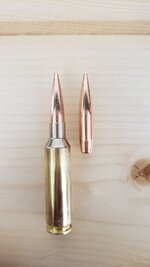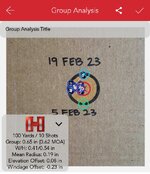The big greasy
FNG
- Joined
- Feb 15, 2021
- Messages
- 60
I'm shooting a tikka 223 with varget and a Sierra match king 77 grain. I can load into the lands or should I load at the book length. Which in general is better accuracy? I see alot of ar rifles shooting these bullets and they are restricted to mag length and are getting good accuracy. So was just wondering what your thoughts are. I know shooting will tell it all, just was thinking.... Book length and lots of jump, or hardly any jump. Thanks.


